History of anti-tank weapons - ATGM
However, all of these tools had a common fundamental flaw - they did not allow an effective fight with tanks at distances greater than 500-700. The experience of the past war revealed the need to create means to deal with tanks at long ranges. To solve this problem could only be guided missiles with killer class.
The first anti-tank missile systems (ATGM) appeared in the 50-ies. Almost immediately, a classification appeared - light (portable), having a firing range of up to 2-2,5 km, and heavy (mounted on armored vehicles, helicopters and other mobile platforms) with a firing range of 4-6 km. It should immediately be said that this division is very conditional. Most light systems can be installed on vehicles, armored personnel carriers, infantry fighting vehicles.
An example would be the domestic ATGM "Baby" or the French-West German "Milan". At the same time, almost all heavy complexes can be transported and used from portable launchers (PU) by calculation from 3-4 people. For example, the Swedes created a portable PU even for the American Hellfire ATGM, originally designed to arm an Apache helicopter and weighing about 45 kg. However, for most heavy ATGMs, the use of portable launchers is rather a rare exception, so in this review we will consider only those complexes that are actually used in this version.
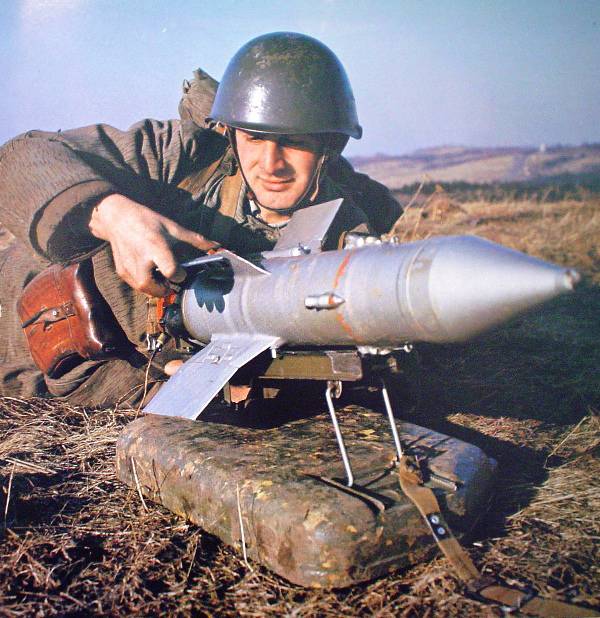
All ATGNs are usually divided into generations, determined by the technical solutions used in them, primarily by the principle of operation of the guidance systems.
A distinctive feature of the so-called 1 generation of ATGM is the use of manual (three-point) method of guidance. Its essence is as follows. The gunner must simultaneously hold the target and the missile in sight of the sight, trying to “impose” the missile on the target using the control stick. Deviations of the control knob are converted by a special calculator into commands for the corresponding deviation of the rocket's controls (most often, these are aerodynamic controls). Commands to the rocket are transmitted through the wire, which during the flight is unwound from a special reel. Such a scheme makes it possible to extremely simplify both the onboard equipment of the rocket and the launching device, but significantly complicates the work of the gunner and sharply limits the speed of the rocket’s flight (no more than 150-180 m / s). In addition, on the initial stage, until the gunner catches the rocket in sight, it makes a slide and is virtually uncontrollable. This leads to the presence of a sufficiently large “dead zone” reaching 200-400 m.
The greatest success in the development of this generation of ATGM was achieved by French specialists who developed Entak in the 50-ies. He was in service with almost all NATO countries, including the United States. The same generation also includes the Russian Malyutka anti-tank missile system, which is also the most widely spread. At the end of the 60 in the UK, the Swingfire ATGM was created, which also had a portable version. Its feature was the use of an improved method of three points - speed control. Usually, as long as the control knob is deflected to one side or the other, the rockets are also deflected accordingly, and it continues to turn. With speed control, as soon as the handle deflection stops, the rocket also stops turning and goes in a new direction. When the control stick returns to the neutral position, the rocket returns to the line of sight.
This method of guidance somewhat simplifies the work of the gunner, but it did not become widespread, because by the end of the 60-i, the semi-automatic, or two-point, method of targeting became widely used, which became the main characteristic feature of the 2-generation ATGM.
The main innovation in this method was that the gunner should follow only the target, constantly holding the crosshair on it, and the rocket is accompanied by an angular deviation from the sight line using a special device (goniometer). Tracking is carried out either by the rocket's main propulsion engine, or by special radiators — a tracer or a xenon source of short-wave infrared radiation. The computing device converts the magnitude of the angular mismatch of the rocket and the line of sight into commands that are transmitted to the rocket by wire.
Although this method of guidance significantly simplifies the work of the gunner, dramatically increasing the likelihood of hitting the target, using a wired communication line does not significantly increase the speed of the rocket (it is usually subsonic), which requires tracking the target for a sufficiently long time. In combat, this dramatically reduces the survival of anti-tank systems. To solve this problem, it was necessary to get rid of the wired communication line between the rocket and the launcher. It should be noted that the first wireless communication lines between the PU and the rocket appeared in heavy ATGMs (American Shilleyla, domestic Sturm), since it was precisely when shooting at long distances (4-6 km), and even from mobile carriers ( armored vehicles, helicopters), the disadvantages associated with the low speed of the rocket, are particularly noticeable. As for portable ATGMs, when firing at a distance of up to 3 - 3,5 km, the need for constant tracking of the target for 13-15 seconds. more than offset by the simplicity and cheapness of the wire line. Therefore, almost all mass samples of such ATGM up to the end of the 90-s used a wire line.
These include domestic ATGM "Fagot", "Competition", "Metis", the American "Dragon" and "Toy", Western European "Milan", the Chinese "Red Arrow-8".
Local conflicts 70-80-s, showing the high combat effectiveness of anti-tank systems, revealed the need to further improve their armor penetration, which led to the use of more powerful warheads of larger diameter. The fuses were placed on special pins to explode the CU at the optimal distance from the armor, so that the cumulative jet was in focus at the point of meeting with the armor.
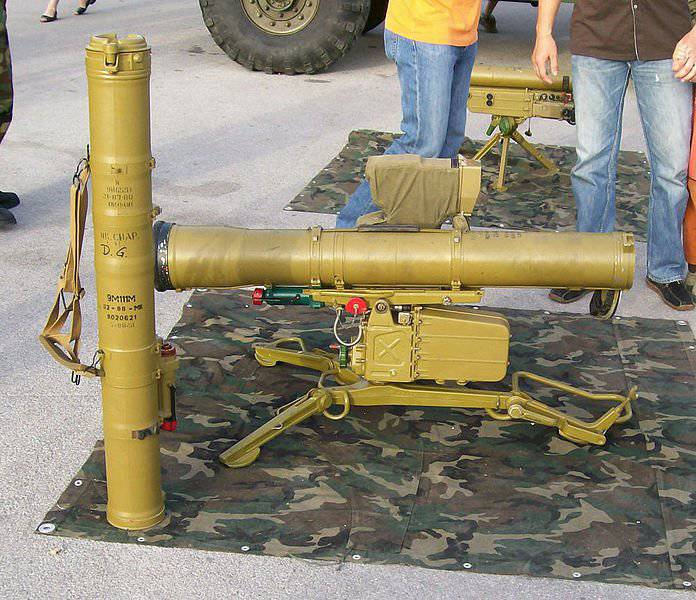
It was also necessary to give the ATGM the possibility of using at night and in conditions of poor visibility (smoke, dust, etc.). This task in the NATO countries was accomplished in 80s, when thermal imaging sights were developed for anti-tank systems.
At the same time, the replacement of analog calculators to digital ones began, which not only dramatically increased reliability, but also improved noise immunity by introducing an additional rocket tracking channel through a thermal sight, operating in the long-wavelength infrared band (8-14 μm). Unfortunately, the domestic industry has lagged far behind the West in this matter - practically suitable thermal imaging sights appeared only in 90-ies, but to this day there are few of them in the army due to the chronic lack of financial resources.
Another problem for developers was the emergence of tools for creating optical noise such as the domestic "Curtains" (MIDAS
- United Kingdom, Pomals Violin (Israel). To increase the noise immunity, in addition to dual-channel rocket tracking, it was necessary to introduce a pulsed radiation source with coding into one of the channels. The appearance of active (dynamic) armor at the beginning of 80-x has set new tasks for the developers of the ATGM. Regular upgraded versions of anti-tank systems received tandem warheads. There has been a tendency to use new explosives (EX), significantly exceeding even HMX, and heavy metals (tantalum, molybdenum) for lining CHF. There was an idea of defeating tanks not in the forehead, but in the roof of the hull and turret, where the thickness of armor is much less. For the first time such a decision was applied in the Swedish ATGM "Bill" RBS-56, adopted in service in the 1991 year. Its principal difference from all previously developed ATGMs was that the cumulative warhead was directed at an angle of 30 degrees down from the axis of the rocket and was undermined by a proximity fuse when flying over the target.
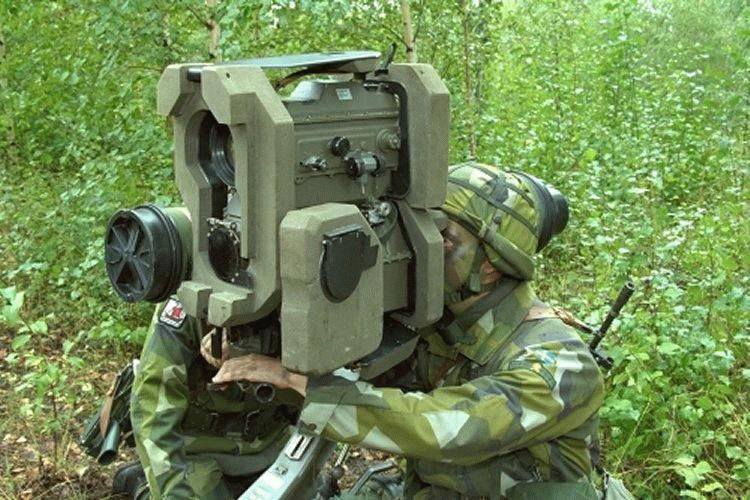
Currently, a modification of the "Bill-2" is still being made, albeit in small batches. This anti-tank system includes a rocket in a container and a launcher with day and thermal imaging sights.
It differs from the base model in the presence of two downward cumulative warheads and an advanced digital control system. Increased tracking accuracy is ensured by installing a gyro sensor on the PU, which tracks the gunner’s movements during firing. The angles of installation of the warhead are selected so that when undermining the cumulative jets fall into the same point on the armor.
Each warhead has two fuses - magnetic and optical. The rocket is guided through a laser emitter installed in the tail, and a conventional wire line is used to transmit commands to the rocket’s board.
The digital control system provides three options for using the rocket, selected before launch using a special switch:
- against armored targets (main) - the missile flies 1 m above the line of sight, magnetic and optical fuses are turned on; - against bunkers, shelters - the rocket flies along the line of sight, the magnetic and optical fuses are turned off. Undermining is produced by a contact fuse;
- against poorly protected targets - the rocket flies, as in the main mode, but only the optical detonator is on.
It was noted in the press that although this ATGM showed very high characteristics on tests, the expensive price limits its use in other countries. In particular, it is for this reason that the United States refused to use it as an intermediate model, designed to replace the “Dragon” anti-tank systems before the development of the “Javelin” anti-tank systems.
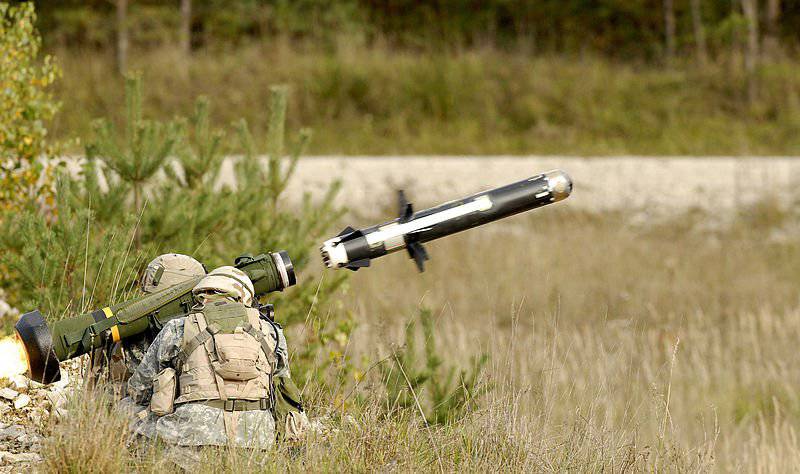
A peculiar example of evolutionary development, which has been keeping them up-to-date for almost three decades, is the American Toy TKM and the West European Milan.
Prototypes of ATGM "Toy" appeared in the 1969 year. The rocket had a cumulative warhead, solid starting and propulsion engines, onboard control equipment, as well as a xenon light source at the bottom. According to the test results, it was improved: increased by 25% (up to 3750 m), the start-up distance due to extension of the wire on the coil and increase in the march speed, and in 1970, it was put into service as part of the complex under the BGM-71A symbol.
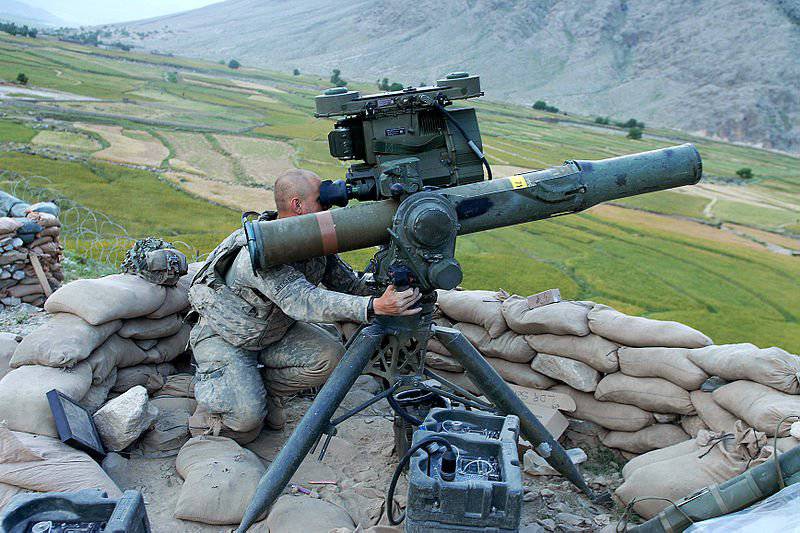
In 1981, a new modification of the "Advanced Toy" (BGM-71С) was adopted. Its main difference was the installation of a contact fuse on the pin, which is retractable after starting. This ensured undermining of the warhead at the optimal distance from the armor and, in combination with the use of new explosives, made it possible to significantly increase armor penetration.
The result of a much deeper modernization was the Tou-2 version (BGM-71D), which was put into service in the 1986 year.
Its main difference was the increase in the caliber of warheads from 127 mm to 152 mm, which allowed increasing its mass and armor penetration. The thermal sight AN / TAS-4 was introduced into the ground-based PU, and the analog computer was replaced with a digital one. This made it possible to introduce tracking of the rocket in the infrared range and dramatically improve noise immunity.
In 1989, the Tou-2 A rocket was introduced into the complex, which has a tandem warhead equipped with a more powerful explosive (LX-14 is an alloy of HMX with esten) and a tantalum warhead lining. This ensured an increase in armor penetration to 900 mm.
In 1996, the Tou-2В appeared, which was fundamentally different from all previous ones by the presence of two vertically positioned warheads and was intended to hit the target from above. Moreover, it was noted that modification B was not intended to replace, but to complement modification A.
The "Toy" complex is in service in the 41 country. Various modifications are produced (or were released) under license in the UK, Japan, Egypt, Switzerland and Pakistan. The complex is transferred by calculation from 4 people.
Another example of evolutionary development is the light Milan ATGM, created in 1972. The complex includes a PU and a rocket in a container.
At the beginning of the 80-ies, an improved version of the Milan-2 appeared, having a higher armor penetration due to a new warhead increased from 103 to 115 mm diameter with a retractable pin, as well as a MIRA thermal sight.
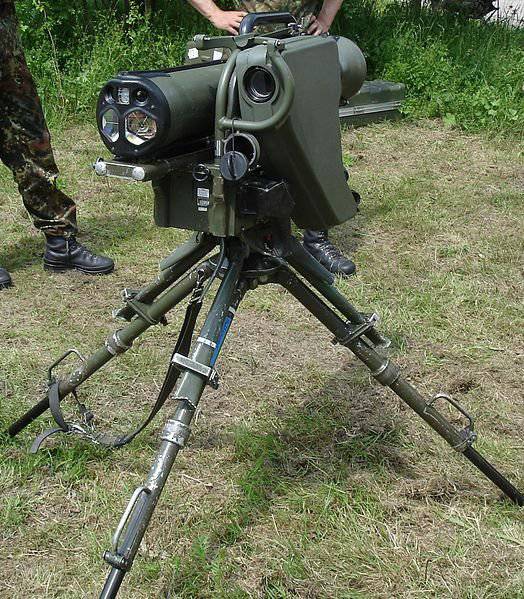
A modification with the Milan-2T tandem KBCH soon appeared, and Milan-3, which has a rocket tracking system in two IR bands and a thermal sight of the new generation, in the 1996 year. The Milan MTR system is in service in 46 countries and is licensed in the UK, Italy and India. The complex is transferred by calculation from 2 people.
Wired control systems will for a long time be effectively used in short-range ATGMs, which, in fact, are the "heirs" of heavy anti-tank grenade launchers. These include the domestic Metis and the American Dragon, replacing the 70-mm LNG-73 in the Soviet Army and the 9-mm M90 in the US in the 67-ies, respectively. The dragon ATGM system used a very original control scheme using pulsed disposable micromotors located in the center of mass of the rocket. On the ATGM, it did not give any particular advantages, but it was very suitable subsequently for rockets designed to hit high-speed maneuverable targets in the air and in space.
With a small range of fire (700-1000 m) flight to the target takes only 4-5 seconds. even at a very moderate speed, at the same time the wired system remains the easiest and cheapest. Therefore, control systems of missiles of this type remain very conservative.
An example is the rather successful French-Canadian Erike ATGM, which was put into service in the 1994 year. This complex was created to replace the French anti-tank grenade Apilas, armor penetration of which by the end of the 80-s was already insufficient.
In addition to France and Canada, this complex is also in service in Malaysia, Norway and Brazil, and in Turkey it will be manufactured under license. The complex consists of a rocket in the launch canister and a reusable starting device with an aiming device. A feature of the complex is the so-called "soft" launch, which dramatically reduces noise and other unmasking signs when fired, and allows you to use anti-tank systems from cover, but at the same time dramatically reduces the initial speed of the rocket (total 17 m / s). This virtually eliminates the control with the help of aerodynamic control surfaces; therefore, the gas-jet deflection system of the nozzles of the cruise engine located in the center of the rocket was used.
The rocket is equipped with a tandem warhead with a diameter of 137 mm. For shooting at night and in poor visibility conditions, a Mirabel thermal imaging sight weighing 3,7 kg can be mounted.
However, the method of aiming at a laser beam allowed to radically solve the problem of increasing noise immunity and speed. The rapid development of optical and electronic technology in the 90's led to the widespread introduction of this method of targeting light ATGMs. Their typical representatives can be the domestic "Kornet" and created by a consortium of western European firms TRIGAT MR.
Domestic ATGM "Cornet" was developed in two versions - light and heavy. Although the latter is intended primarily for use with armored vehicles, it can be used in a portable version.
The rocket has a tandem warhead and provides the highest of all domestic samples armor penetration - 1200 mm. In addition, there is a rocket and a thermobaric (detonating) warhead, the TNT equivalent of which reaches 10 kg.
The rocket has aerodynamic rudders and on the overall layout is very similar to the previously developed at the end of 80-ies by the same developer (KBP, Tula) ATGM "Reflex", launched from the barrel 125-mm tank gun.
It should be noted that the rocket uses the technology developed by the KBP of the air-dynamic drive of the rudders (VDPR), which has already been very effectively used on the Metis-M ATGM and a number of other domestic SD.
The heavy version entered into service with the Russian army is also exported to a number of countries. The lightweight version has slightly lower armor penetration (up to 1000 mm), but weighs significantly lighter. It is equipped with a "soft" start.
The TRIGAT MR ATGM is created by the UK, Germany and France to replace the Milan ATGM. Missile launches are expected in 2002 year.
Unlike its predecessor, a laser beam guidance system is used in the complex. Other differences are the "soft" launch and use of gas-jet rudders throughout the flight path.
The end of 90-s was marked by the appearance of the long-awaited ATGM of the 3-generation operating on the principle of “fired-forgotten”. The first production model of this type was the American Jamelin ATGM, which was put into service in the 1998 year. The complex consists of a rocket in a container and an aiming device with a thermal sight.
The rocket has a thermal homing head, in the focal plane of which the IR sensor is located (it is a 64x64 matrix of sensitive elements based on cadmium telluride), operating in the far infrared range (8-14 μm).
To start the shooter, it is enough to point the sighting device at the target, while the electronic image of the target and its surrounding background is “rewritten” in the GPS and the rocket is ready for launch. After launch, the rocket is completely autonomous, and the shooter can immediately leave the position. Since the complex provides a "soft" start, shooting can be carried out from cover.
The rocket has two target attack modes - from the "hill" (armored targets) and direct (bunkers, shelters, etc.). In the first case, the rocket rises to the height of 150 m after launch and then swoops on the target, hitting thinner upper armor. However, the price of a shot from such a nanobud reaches eighty thousand dollars, depending on the CU.
It is interesting to note that a similar Nag "NGTM" was developed and used in India. As for the prospects for the development of this type of weapon in the coming years, the following trends can be noted.
Apparently, there will not be a complete transition of the ATGM of this class to the use of guidance according to the principle “fired - forgot”, and the guidance systems on the laser beam will be used for a long time. This is primarily due to economic considerations - the ATGM with such systems is significantly (according to some data, 2-3 times) cheaper than those built on the principle of homing. In addition, the homing system can only be used against objects contrasting against the background of the surrounding terrain, and this is not typical for all purposes on the battlefield. Another argument against the use of thermal imaging seeker is the fact that it takes some time (no less than 5 seconds) to take a census of the target image from a thermal sight to the GPS.
For short-range ATGMs (up to 1 km) in the coming years, conventional wired control systems will be quite competitive.
As for the method of hitting the target (head-on or on top), they both will develop, not excluding, but complementing each other.
A mandatory requirement is to ensure a “soft” start-up and, as a result, the use of control by changing the thrust vector of the engine.
A significant impact on the development of anti-tank systems will have the recent introduction of active protection systems for tanks designed to destroy ATGM on the flight path. For the first time in the world, such a system, called the Arena, was created by domestic developers. It is already installed on new domestic tanks.
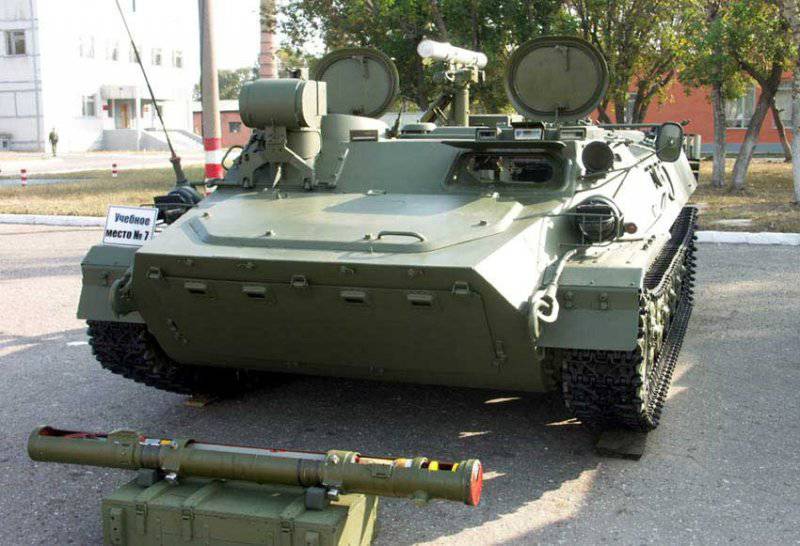
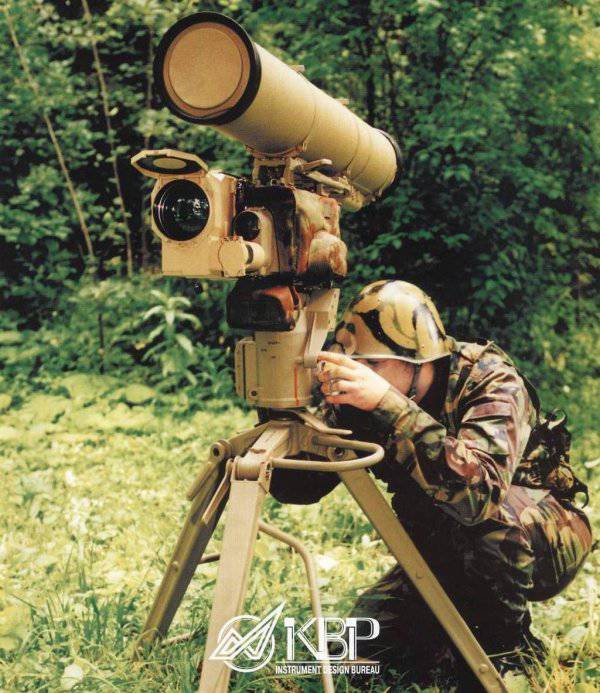
Information